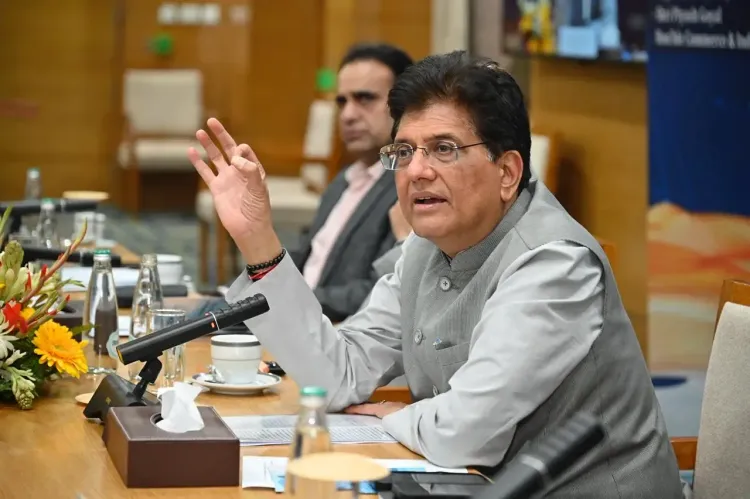How is Piyush Goyal's New Trade Intelligence and Analytics Portal Benefiting Exporters?

Synopsis
Key Takeaways
- Access to Trade Data: The portal opens new avenues for smaller businesses.
- Global Opportunities: Enhanced access to the global services sector.
- Automation: Streamlined processes for trade reporting.
- Trade Analytics: Comprehensive insights for informed decision-making.
- Cost-effective Solution: Open-source platform with minimal expenses.
New Delhi, Nov 18 (NationPress) - Commerce and Industry Minister Piyush Goyal introduced the Trade Intelligence & Analytics (TIA) Portal on Tuesday, aimed at providing fresh insights for exporters, importers, startups, and MSMEs. This platform will make additional trade data accessible to all participants in the trade ecosystem.
According to Goyal, even the smallest businesses in the most secluded areas will now have access to data that was once exclusive to larger corporations.
The minister emphasized that significant opportunities in the global services sector will now be within reach for all stakeholders. He also mentioned that the portal will assist exporters in better utilizing the country’s Free Trade Agreements.
Goyal stated that the Ministry of Commerce has dedicated considerable efforts to the creation of this platform. He believes that the portal has the potential to foster trade diversification, broaden India’s trade portfolio into new domains and products, and identify previously missed opportunities.
Understanding the necessity for a strong intelligence and analytics framework to back evidence-based policymaking and targeted sectoral interventions, the Department of Commerce began developing the Trade Intelligence & Analytics (TIA) Portal in March 2024.
This initiative aims to enhance capabilities across all commodity and territorial divisions, Export Promotion Councils (EPCs), and missions abroad in target regions.
In this light, the Department has constructed a comprehensive analytics platform, the Trade Intelligence & Analytics (TIA) Portal, designed to enhance trade analytics and promote data-driven, evidence-based policymaking.
The portal serves multiple perspectives, including India, global, and bilateral trade, with a variety of databases encompassing trade and macroeconomic indicators, which provide vital trade insights for informed decision-making.
The Trade Watch Tower offers country and commodity-level intelligence through specialized tools and visualizations that empower users to detect global and bilateral trends, enhancing analytical capabilities for identifying market diversification opportunities.
Database collection has been automated through APIs for user convenience, and a seamless data extraction capability has been developed to allow users to retrieve and download commodity and country data.
Additionally, workflows such as the Monthly Trade Report (spanning over 300 pages) and surge reports are now automated, each prepared in two versions based on trade alert data and final data (each exceeding 30 pages).
The Trade Data Analytics Portal is a cost-effective, open-source solution that emphasizes accessibility, scalability, and user-centric design. With no software licensing fees and only minimal server infrastructure costs, it presents a sustainable model for long-term use.
The Trade Watch Tower identifies Champion Products by analyzing global demand and mapping India’s supply capabilities. Dedicated dashboards monitor the performance of Production Linked Incentive (PLI) commodities, facilitating the assessment of policy impacts and market competitiveness. Surge monitoring tools keep track of import and export surges across commodities and countries, including both FTA and non-FTA partners, enabling early detection of anomalies and emerging risks.
A Critical Minerals Dashboard monitors over 30 critical minerals and maps India’s trade flows and global sourcing destinations at the HS code level. A Tariff Analysis Dashboard and a Target Monitoring Dashboard are also being developed for tariff insights and performance tracking.
To enable advanced trade analytics, the portal includes trade indices like the Trade Complementarity Index, which evaluates the alignment between India’s export profile and the import requirements of partner countries.









